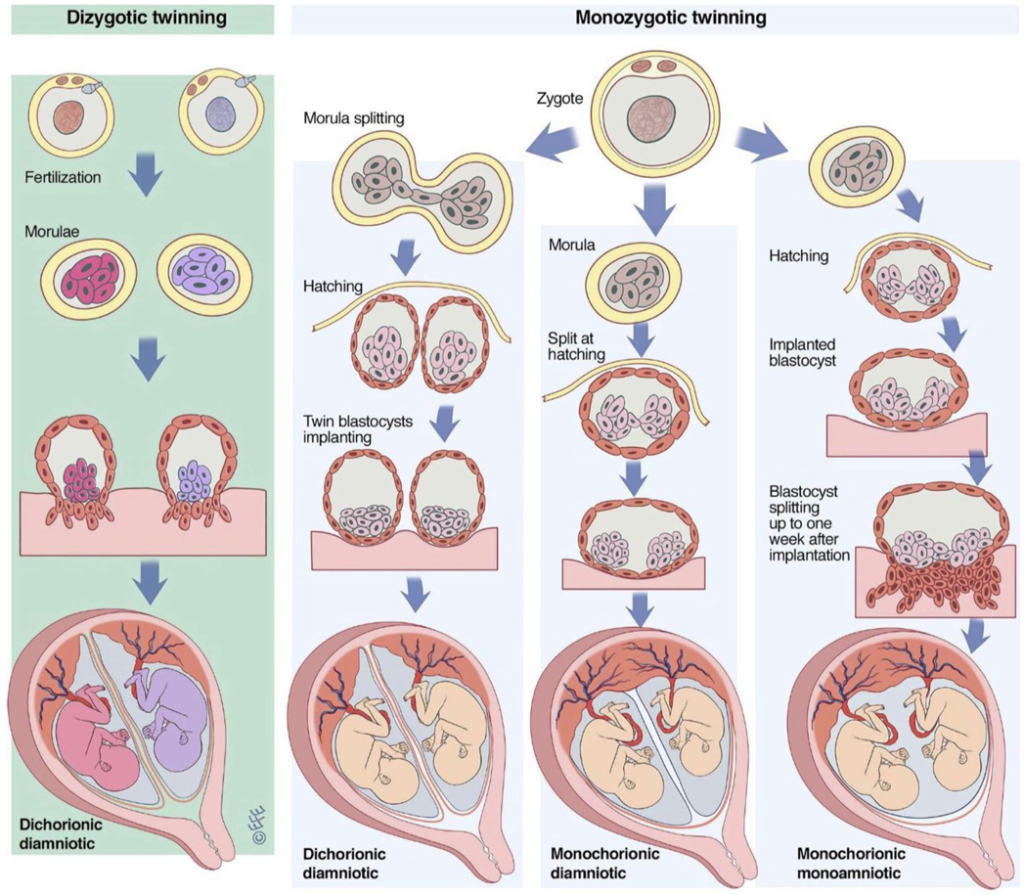Explanatory illustration shows the different way in which the twins develop in the womb.
The left column depicts dizygotic twins – the most common type of twin pregnancy (about 2/3 of the total), in which two spermatozoa fertilize two eggs. That is, we have two zygotes (sperm-egg combinations). Each embryo has a separate chorion (the membrane around the amniotic sac), an amniotic sac and a placenta. The two embryos are as different as any siblings.
In monozygotic twins, which make up 1/3 of the twin pregnancies, we have a zygote and initially an embryo that, a few days after its formation, is divided into two.
Depending on how soon the division is made, three different types of monozygotic twins emerge:
Dichorionic-Diamniotic: When the division is made in the first three days after fertilization, each embryo has a separate chorion, amnion and placenta, as in the case of divergent twins.
Monochorionic-Diamniotic: If divided later, until the 8th day of pregnancy, the two embryos are in different amniotic sacs but share the same chorion and placenta.
Monochorionic-Monoamniotic: If divided after the 8th day of pregnancy, the two embryos are in the same chorion, in the same amniotic sac, and feed on the same placenta. In this case the chances of complications are greatly increased, and if the division is made after the 13th-14th day the twins are very likely to be Siamese.
It is worth noting that heredity plays a role in dizygotic twins but not in monozygotic.






